MECOM2022

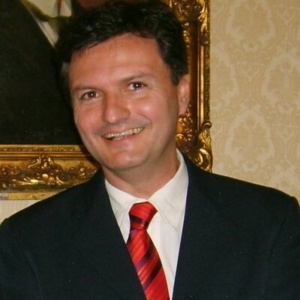
Marcelo Savi is Professor at the Department of Mechanical Engineering in Universidad Federal de Rio de Janeiro COPPEP. He is director of the Center of Nonlinear Dynamics. He has published more than 450 articles in journal and congresses.
prof. mARCELO SAVI
Nonlinear and chaotic dynamics of smart systems
Bioinspiration is a paradigm that extracts design principles from biological and natural systems. Based on that, it is possible to create systems and structures with adaptive behavior according to its environment. Smart materials have an essential importance on this idea being used as sensors and actuators that define the remarkable system characteristics. Besides this, natural rhythms are inspiring new situations and therefore, the investigation of nonlinear dynamics, chaos and control is establishing other design paradigms. The use of bioinspired smart systems is now evolving to create origami systems based on the ancient Japanese art of paper folding. The main idea of the origami is to create a three dimensional structure from a plane source. Adaptive origami systems have been explored to produce foldable, adaptive structures that can be applied in several areas of human knowledge. This presentation deals with a general overview of nonlinear mechanics of smart bioinspired systems and structures. Shape memory alloy systems, origami systems, mechanical energy harvesting, chaos and chaos control are some subjects presented to give a general idea of the subject. The rich, complex dynamical response of these systems is of special concern.
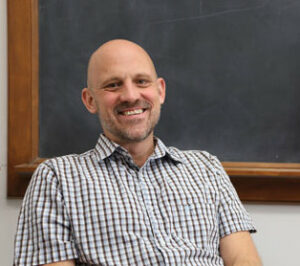
Tim Colonius is Frank and Ora Lee Marble Professor of Mechanical Engineering; Cecil and Sally Drinkward Leadership Chair, Department of Mechanical and Civil Engineering; Executive Officer for Mechanical and Civil Engineering at the California Institute of Technology (Caltech), Pasadena, California, USA. He got his PhD from Stanford University in 1994 and has been a Professor at Caltech since then.
Professor Colonius studies complex, multiscale flow phenomena and their control using theory, numerical experiments, and simulations. Simulations from his lab have provided key insights into such subject areas as turbulence, instabilities, sources of sound, and shock and bubble dynamics. His research has broad applications—from ultrasound imaging and therapy to mitigating jet noise to generating energy from flow systems.
Prof. Tim colonius
AN ADAPTIVE, SCALABLE, AND ROBUST APPROACH FOR COMPUTING EXTERNAL FLOWS VIA THE IMMERSED BOUNDARY METHOD
The immersed boundary (IB) method enables computation of flows in a wide array of complex geometries with far easier meshing compared to traditional body-fitted discretization, particularly for moving/deforming bodies. Retaining an underlying Cartesian mesh is likewise very favorable for developing robust (conservative, stable), efficient, and scalable algorithms that can preserve many of the important symmetries and invariants of the continuous equations of motion.
On the other hand, a grid with fixed resolution is inefficient for resolving multi scale features such as thin boundary layers. We describe recent efforts to equip and IB method with two features that alleviate these constraints while maintaining the benefits of the Cartesian mesh. These are the use of a lattice Green’s function solver (implemented with a scalable, linear-complexity fast multipole method) and block-wise adaptive mesh refinement. We highlight the capabilities of the solver by computing flows over bluff and streamlined bodies at high Reynolds number.
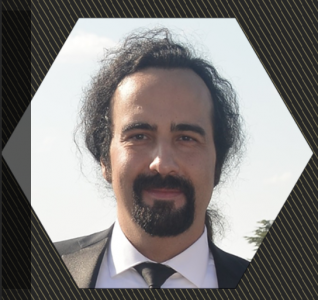
Alper Erturk is Woodruff Professor in the George W. Woodruff School of Mechanical Engineering at the Georgia Institute of Technology, Atlanta, Georgia, USA. He got his PhD from Virginia Tech in 2009 and has been a Professor at Georgia Tech since 2011.
Dr. Erturk’s theoretical and experimental research interests are centered around the intersection of smart structures and dynamical systems to address cutting-edge research problems, including low-power electricity generation via energy harvesting (e.g. from vibration, elastic/acoustic waves, air/water flow, etc.), bio-inspired nonlinear actuation and hydrodynamic thrust generation using flexible piezoelectric materials, vibration attenuation in flexible linear/nonlinear structures via passive and active metamaterials, wireless acoustic (ultrasound) power transfer, phononic crystal-based elastic/acoustic wave guiding, exploiting strain gradient-induced polarization and size effects in elastic dielectrics, among others. Most recent research in Dr. Erturk’s Smart Structures and Dynamical Systems Laboratory (SSDSL) also involves the leveraging of vibration and acoustic behaviors in biomechanical systems (e.g. skull-brain as a dynamical system).
Prof. Alper Erturk
Leveraging vibration and wave phenomena: from energy harvesting and bioinspired robotics to metamaterials and transcranial ultrasound
This talk will review our recent efforts on exploiting vibration and elastic/acoustic wave phenomena in emerging fields and across disciplines for various applications. The first part will discuss examples from the domain of vibration energy harvesting for small electronic components by using piezoelectric transduction in conjunction with concepts from nonlinear dynamics and fluid-structure interaction. Multifunctional scenarios will also be presented, such as combining energy harvesting and bio-inspired actuation in the same robotic platform, as well as concurrent energy harvesting and metamaterial-based vibration attenuation. In the second part, the focus will first be placed on phononic crystal-based manipulation of 2D elastic and 3D acoustic wave propagation.
Specifically, in-air sound wave focusing and underwater ultrasonic wave focusing using 3D-printed phononic crystals with tailored microstructure will be summarized for applications including wireless power transfer. Then, ultrasonic power/data transfer to wireless components in metallic enclosures will be addressed along with the use of phononic crystals for crosstalk minimization via bandgap formation between the piezoelectric channels. Examples will also be given on programmable piezoelectric metamaterials with synthetic impedance circuits. Finally, the leveraging of vibrations and guided waves in the human skull will be discussed briefly for purposes ranging from high-fidelity modeling and parameter identification via vibroacoustic experiments to investigating the role and potential use of guided waves in cranial/transcranial ultrasound.
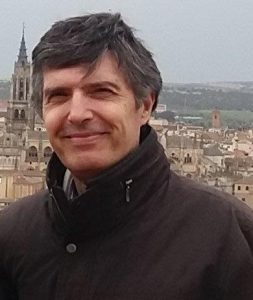
Elbio Palma is Professor of the Department of Physics at the Universidad Nacional del Sur and Principal Investigator of CONICET at the Argentine Institute of Oceanography (IADO).
In the last 25 years he has taught undergraduate and postgraduate courses on Continuum Mechanics, Geophysical Fluid Dynamics, Numerical Modeling, Physical Oceanography and Earth Physics. His research work focuses on the theory and computational modeling of the ocean and its relationship with climate and biological productivity with particular emphasis on the circulation of the Southwest Atlantic Ocean and its continental shelf. His topics of interest range from large-scale circulation to the coast, including dynamics of fronts, dynamics of low-salinity water discharges and models of biological connectivity, among others.
prof. Elbio palma
numerical ocean modelLing
The ocean plays a central role in regulating the Earth’s climate and is also a large supplier of natural resources. Understanding its circulation patterns, the physical processes involved, and their relationship with the remaining components of the climate system is of paramount importance to address problems related to climate change and possible future modifications in marine ecosystems.
Given the physical and mathematical characteristics of the problem the use of numerical models turns to be essential. The inherent limitations of the alternative and more traditional scientific methodologies of making in-situ measurements and developing analytic theories for highly nonlinear dynamical systems, along with the steady increases in computing power, has led to a rapid grow of this practice in the last decades.
In this presentation I will introduce some aspects of numerical ocean models and show modelling examples to study dynamical and physical-biological aspects of the ocean circulation with particular emphasis in the South Atlantic and the Southwestern Atlantic Shelf, one of the most productive marine ecosystems of the world ocean. Among these examples I will include the dynamics and variability of shelf and shelf-break currents, generalized upwelling and biological productivity and cross-shelf exchanges between the shelf and the deep ocean.
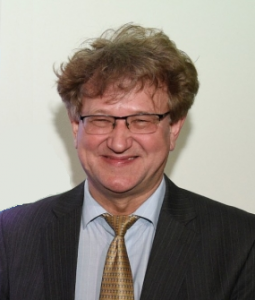
Marian Wiercigroch is a Mechanical Engineer from the Polytechnic University of Silesia (Poland), and a Doctor of Engineering from the University of Aberdeen (Scotland). He is the Sixth Century Chair in Applied Dynamics at the University of Aberdeen. He is founder and director of the Center for Applied Dynamics Research and formerly Director of Internationalization for the Faculty of Physical Sciences and the Department of Engineering at the University of Aberdeen.
His area of research is the dynamics of mechanical systems applied to engineering problems, such as oil drilling, machining processes, rotating equipment, underwater acoustics, material fatigue, renewable energies, energy harvesting, and control of intelligent structures. He has published more than 300 scientific articles and is the author of 8 patents, including the revolutionary drilling technology Resonance Enhanced Drilling. He is a member of eight international journal editorial boards, and editor-in-chief of the International Journal of Mechanical Sciences. He has received multiple awards and distinctions, including an Honorary Doctorate from Lodz Polytechnic University.
prof. marian wiercigroch
Calibrated Low Dimensional Models in Non-smooth Dynamics
Unveiling complex behaviour in dynamical systems often relies on in-depth analysis using robust low dimensional models, which can be effectively used for parametric computational studies. The most effective way to obtain new insights is having these low dimensional models calibrated with high fidelity experiments.
In this lecture I will introduce the recent advances in the field of nonlinear dynamics with a special focus on non-smooth dynamical systems, which is the newest and vastly developing area with new phenomena such as grazing induced bifurcations and a broad suite of application in science and engineering.
In the first part, I will define nonlinearity and nonlinear dynamics. Specifically I will focus on a class called non-smooth dynamical systems. Then I will show how such problems can be effectively modelled and analysed by low dimensional dynamical systems. The generic complexity of non-smooth dynamics will be demonstrated by an elastic impact oscillator – an archetypal model for modelling of high frequency vibro-impact drilling.
The second part will be devoted to what we might call Nonlinear Dynamics for Engineering Design where I will present results from my recent projects, where nonlinear dynamic interactions have been used to enhance the performance of real systems and structures. I will put a special emphasis on one large projects from energy industry, where we have developed a revolutionary downhole drilling technology tested in our unique drilling laboratories. I will argue that this would not be possible without calibrated low dimensional models.
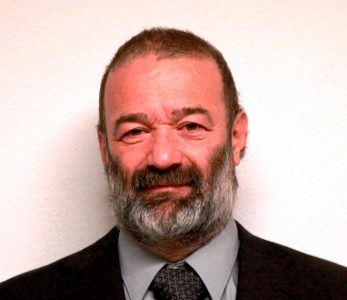
Ricardo Lebensohn (PhD in Physics, Universidad Nacional de Rosario (UNR), Argentina, 1993) is a senior scientist of Los Alamos National Laboratory’s Theoretical Division, Fluid Dynamics and Solid Mechanics Group, in New Mexico, USA, since 2003. Prior to that, he held positions as professor and researcher at UNR. Ricardo is an expert in the area of microstructure/property relationships of polycrystalline materials using crystal plasticity modelling. His contributions include the viscoplastic selfconsistent (VPSC) formulation, a homogenization-based polycrystal plasticity simulation tool for the prediction of mechanical response and microstructure evolution of polycrystalline aggregates, and the Fast Fourier Transform (FFT)-based formulation, for efficient prediction of micromechanical fields in polycrystalline materials, which is ideally suited for numerical simulations with direct input and validation from microstructural images, including those collected by emerging in-situ 3-D characterization methods in Experimental Mechanics.
Among other distinctions, in 2010 he received Germany’s Humboldt Research Award for Senior US Scientists, “for pioneering work in the field of multiscale modelling of plasticity of crystalline materials”. and the 2019 US Minerals, Metals & Materials Society (TMS) Structural Materials Division Distinguished Scientist/Engineer Award, “for long lasting contribution to the fundamental understanding of microstructure, properties and performance of structural materials for industrial applications”.
Dr. Ricardo Lebensohn
Crystal plasticity modelling of microstructure/property relationships of polycrystalline materials
Crystal plasticity (CP) models are increasingly used in engineering applications to obtain microstructure/property relationships of polycrystalline materials. These models require a proper consideration of the single crystal plastic deformation mechanisms, a representative description of the microstructure, and an appropriate scheme to connect the microstates with the macroscopic response. The latter can be based on homogenization, e.g. self-consistent methods, which relies on a statistical description of the microstructure, or on full-field solutions, requiring a space-resolved description of the microstructure, e.g. FFT-based methods, which are attractive due their relative higher efficiency compared with CP Finite Elements and their direct use of voxelized microstructural images.
In general, full-field models are numerically intensive, making their direct embedding in multiscale calculations computationally demanding. Alternatively, they can be used to generate reference solutions for assessment and calibration of approaches based on homogenization or semi-analytical expressions. In this talk we will review the state-of-the-art of polycrystal plasticity models, along with their integration with emerging characterization methods in Experimental Mechanics, and their embedding in Finite Elements formulations to solve problems involving complex geometries and boundary conditions with microstructure-sensitive material response.

Rainald Lohner is the head of the center for computational fluid dynamics of the George Mason University in Fairfax, VA, in the outskirts of Washington, D.C. He received a MSc in Mechanical Engineering from the Technische Universitaet Braunschweig, Germany, as well as a PhD and DSc in Civil Engineering from the University College of Swansea, Wales.
His areas of interest include numerical methods, solvers, grid generation, parallel computing, visualization, pre-processing, fluid-structure interaction, shape and process optimization and computational crowd dynamics.
His codes and methods have been applied in many fields, including aerodynamics or airplanes, cars and trains, hydrodynamics of ships, submarines, UUVs and UAVs, shock-structure interaction, dispersion and pathogen propagation analysis in urban areas and the built environment, haemodynamics of vascular diseases and pedestrian safety assessments.
He is the author of more than 800 articles covering the fields enumerated above, as well as a textbook on Applied CFD Techniques.
prof. Rainald lohner
Risk Mitigation in the Built Environment Via Large Scale Multiphysics Simulations
Buildings and their occupants are constantly exposed to a variety of risks. These could be in the form of unforeseen or extreme loads (wind, snow, blast, pedestrian or seismic loads, hazardous materials),
dispersion of hazardous materials (fire, smoke, …) or pathogen transmission (e.g. via HVAC systems, pedestrian traffic).
Over the last decade, advances in high fidelity multiphysics solvers, high performance computing resources and a robust experimental campaign have produced significant advances and discoveries in this field.
The talk will center on some of these advances, in particular rogue wind loads, COV-19/spread of diseases in the built environment, pedestrian/crowd simulation, i.e. risk mitigation of extreme weather,
health events and loads.
Algorithmic, implementational and practical issues will be considered, and an outlook into coupled problems with large disparity of timescales will be given.